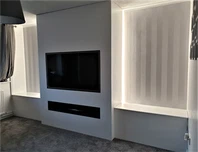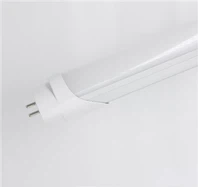The Best Lighting for Studying and Reading
Nothing beats unwinding on a beautiful day while reading your preferred book. What happens, though, if you require the finest desk lamp for studying indoors? How can you locate the greatest reading lamp to keep your eyes safe?
It may appear straightforward to purchase a lamp. Then you understand that discussions of lamps and illumination require their own lexicon. Then, after inspecting more than five lamps (because you have to compare! ), they all begin to resemble one another.
Not to worry! There's no need to be intimidated if you've never heard of lumens, color temperature, or kelvin ranges!
We at BENWEI are aware of the importance of finding the ideal illumination whether reading or studying. We created this tutorial to address this issue. Both the greatest desk lamps for studying and the best lighting advice for reading can be found here.
The Value of Proper Lighting for Studying and Reading
You may have heard that reading is best done in natural light. And frequently, this is true.
Artificial lighting has only recently become widely available—roughly in the last 100 years. People used to read by sunlight, candles, and other light sources before Alexander Lodygin invented the incandescent lamp in 1874, which took much longer to become widely used.
These lights, however, might be rather dim. Additionally, they have limited usage periods due to daylight or candle burnout and are only accessible during specific hours. Even gas illumination had drawbacks; one of them was that it may be harmful.
As lighting technology advanced, we realized that the type of light you read in can directly effect how you feel and how your eyes are affected. This is comparable to Apple installing a blue light filter on iPhones. Your brain is kept active by blue light, which makes it challenging to fall asleep at night.
What happens if we study or read in low light?
Don't read in a dull light is one of our greatest reading lighting suggestions. Try to keep oneself out of situations like this, whether they arise naturally or as a result of a bulb that isn't lit well.
This is because of two key factors:
Your eyes could be harmed by myopia from low lighting. (near sightedness)
Myopia is probably the cause of your blurry distance vision when you can see clearly up close. Wearing the proper glasses or contact lenses can effectively fix this frequent eyesight issue.
According to certain research, reading in low light or without the best reading lamp can raise your risk of developing myopia. You've undoubtedly experienced it firsthand after reading in low light, when your pupils have to widen even further in order to read the words. When you glance up, distant objects and text may initially appear fuzzy.
This strain may not produce myopia in some people, but may instead give them headaches. For those folks, reading under more intense lighting is always advised.
You learn less well when you read in low light.
According to studies, having the right illumination can improve your grades. This is so because low light can make it harder for the brain to process and remember information and can make people feel more anxious.
Similar to how strong bright lights can make it difficult to concentrate, everybody who has taken an exam is aware of this. It is extremely distracting and could even damage your eye itself when a bright light reflects off the page and into your eye.
Therefore, you must determine your ideal brightness settings and locate the top desk lamp for studying if you want to achieve the best results.
What advantages can we gain from studying or reading under good lighting?
What occurs then when you read in adequate to ideal lighting?
Eye fatigue is decreased
You no longer need to enlarge your pupils to let in as much light as possible. This lowers your risk of developing eye fatigue.
It produces a relaxed and productive learning atmosphere.
Reduce the amount of outside distractions in a space by adding the appropriate lighting. Your brain can concentrate on the information it needs to process. This indicates that you are more likely to recall the information you read.
The Best Reading Lamp Consists of Two Main Parts
What color temperature is ideal for studying and reading?
The variety of color temperatures is enormous!
2,000 or less
emits a soft light akin to candlelight. It works well in dimly lit spaces and interiors that require an ambient glow.
2000K-3000K
This light is excellent for both indoor and outdoor use, with a gentle white glow that some people think is more yellow. Frequently, bedrooms, dining rooms, and living rooms contain it.
3100K-4500K
This is mainly seen in "task lighting" settings like kitchens and workplaces. It is significantly brighter in the white light.
4600K-6500K
Offering a blue-white radiance that is quite reminiscent of daylight. great for brightly lit workspaces and other areas.
6500 K and Up
This color temperature creates a strong, blue light that is most frequently seen in business settings.
Below, we examine which lighting is ideal for learning and reading.
The Best Reading and Studying Lighting Advice
If you're attempting to learn or absorb more information, we've already advised against reading in low light. However, we still have a few more tricks to share with you!
You should keep in mind that the optimal light for reading and studying is a bulb that is brighter and has a cooler white to natural daylight range. This corresponds to a range of 4000K to 6500K. You'll notice that you feel more alert and prepared to absorb information.
Additionally, be sure to know which lamp style will suit your workspace and space the most. An LED lamp that is longer and has more bulbs will spread the light more evenly across a larger area. You might need to adjust your book or other study materials because a small spotlight will concentrate its light in one place as you read and learn.
Additional Advice on Choosing the Best Desk Lamp for Reading or Study
Before you purchase your light, take into account the following features:
Modularity and Design
Modern lamps will have a flexible or rotating arm and head option, allowing you to easily adjust the lighting. A more conventional lamp, the kind with the lampshade you frequently see in living rooms, will only illuminate the space in which it is installed. The majority of consumers prefer a contemporary, transportable lamp from the BENWEI line.
Color Temperature and Dimmability
It's helpful to have the option to dim your lamp because, in the early evening, you might only need a little bit of extra light. Your eyes could be harmed by the additional light if your lamp was on full brightness. Similar to this, picking the appropriate color temperature for your surroundings will affect both your surroundings and how you utilize the lamp.
Protection from glare and brightness
As mentioned above, the ideal lamp would have a bulb that ranges from 4000K to 6500K. Look for roughly 450lm from 6-9 watts for general reading and studying.
Energy use and life expectancy
To just change the bulb once every six years or so, you need a lamp that can operate for up to 50,000 hours! A longer lifespan will result, which is beneficial for the environment as well as your wallet.
Price and Space Availability
the logistics of purchasing a lamp. Before making a purchase, think about where the lamp will be put in your room; there is no use in purchasing a floor light if you can only use your desk. Additionally, prices can range from tens to hundreds of dollars, so before you make a purchase, consider the price range you are ready to spend and the features you require.
Conclusion
Finding a lamp you like the look of is only part of the process of purchasing one. You should concentrate on purchasing lighting that is in the 4000K–6500K range and can be dimmed if you want to locate the best desk lamp for studying. Additionally, search for a light with a lengthy lifespan that is well-designed. Not only will you brighten your life, but you'll also shield your eyes from needless harm. What more could you possibly want?
Feature
● 9 watt rechargeable led bulb are the perfect installment that will give you optimum brightness and low maintenance cost.
● Rechargeable LED lights have energy saving capacity of up to 85% more and higher performance compared to equivalent Incandescent Lamps.
● Fear of Power Cut; now enjoy continuous lighting experience with 9 watt rechargeable led bulb.
Specification
| Rechargeable Battery: | Yes |
| Colour: | White |
| Power (in Watts): | 9W |
| Back Up Time: | 2-4 Hours |
| Product Type: | Emergency Lights |





